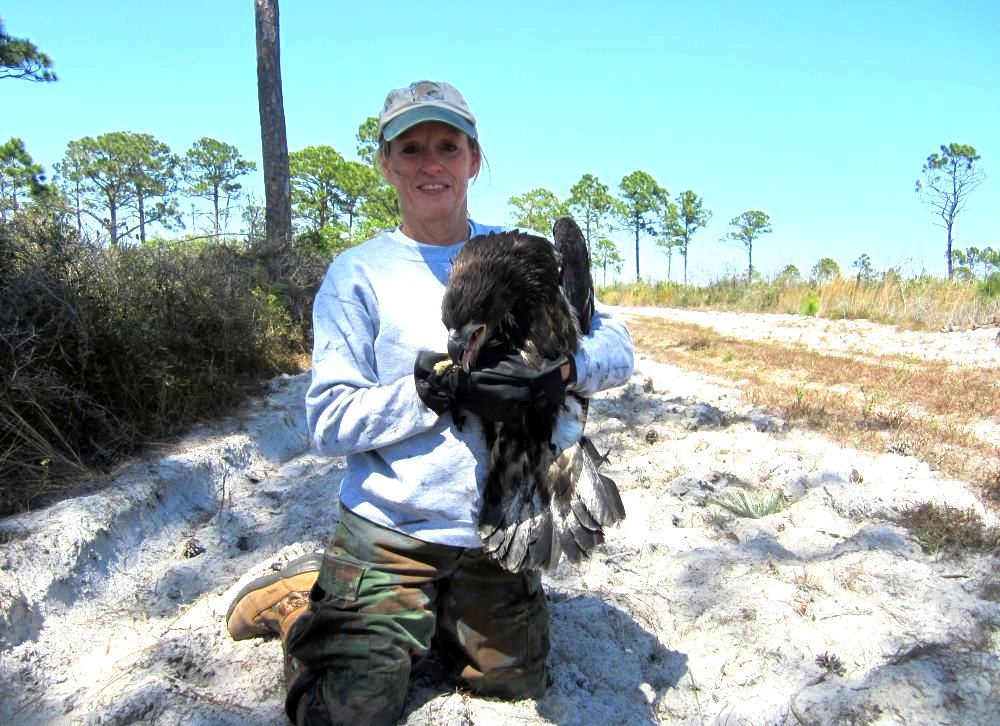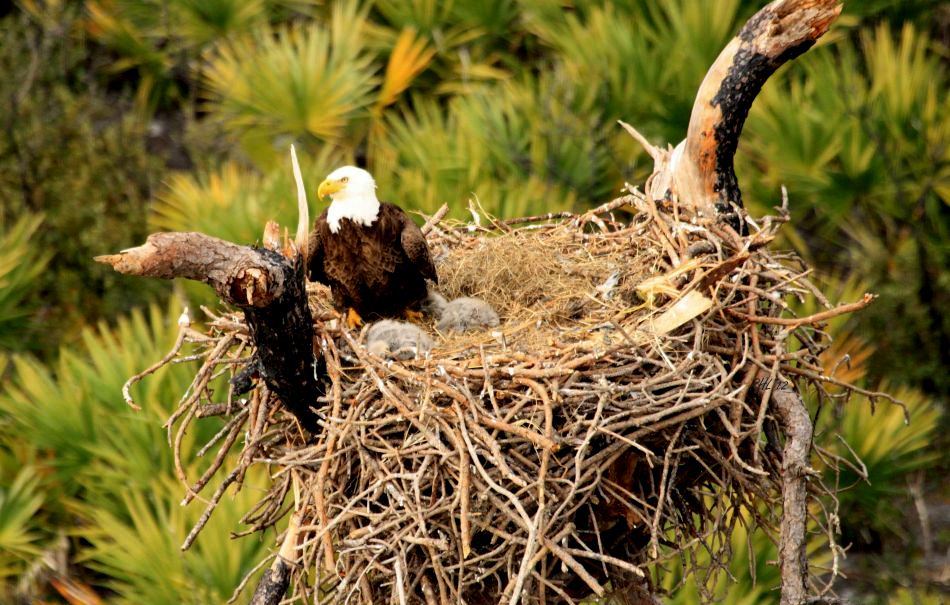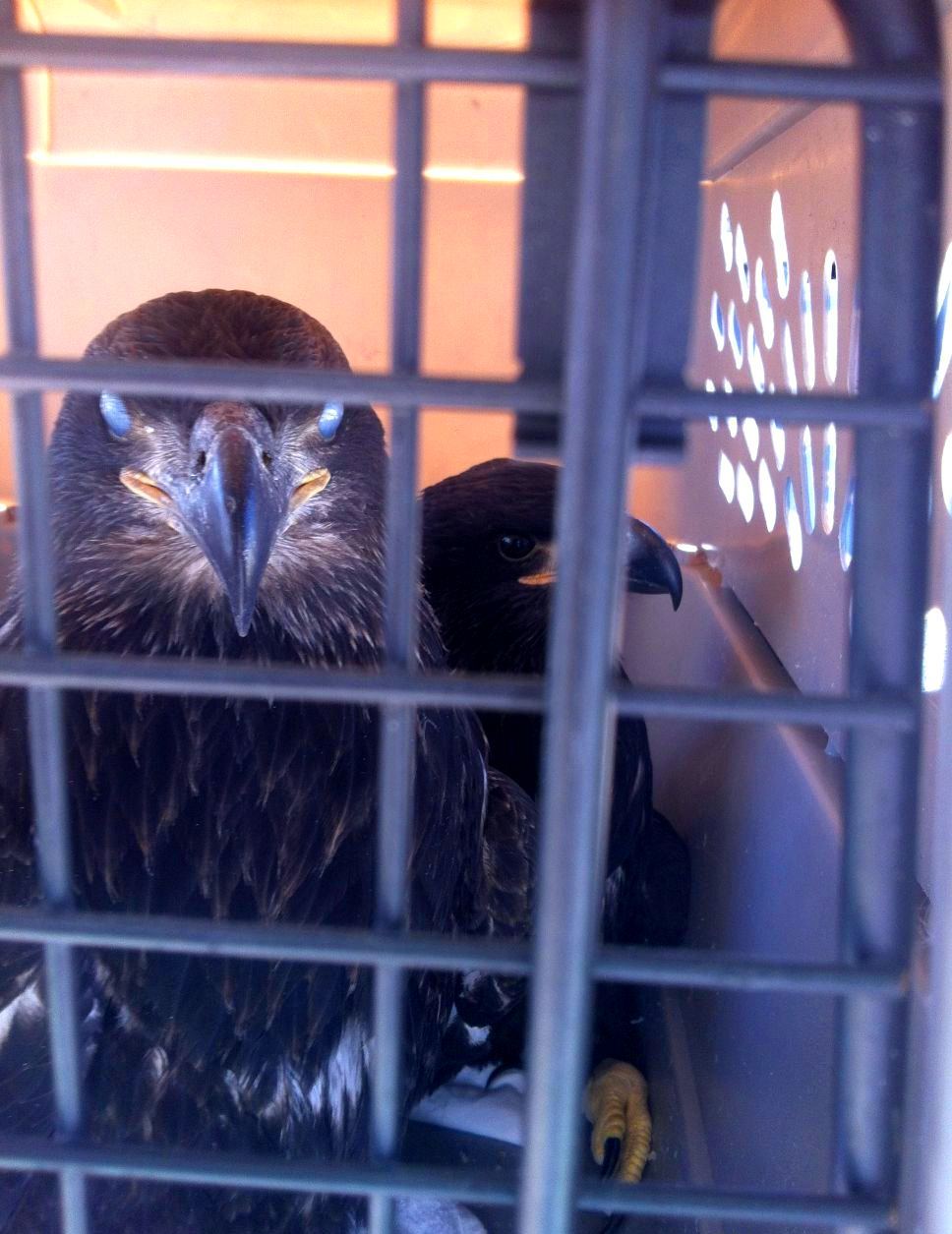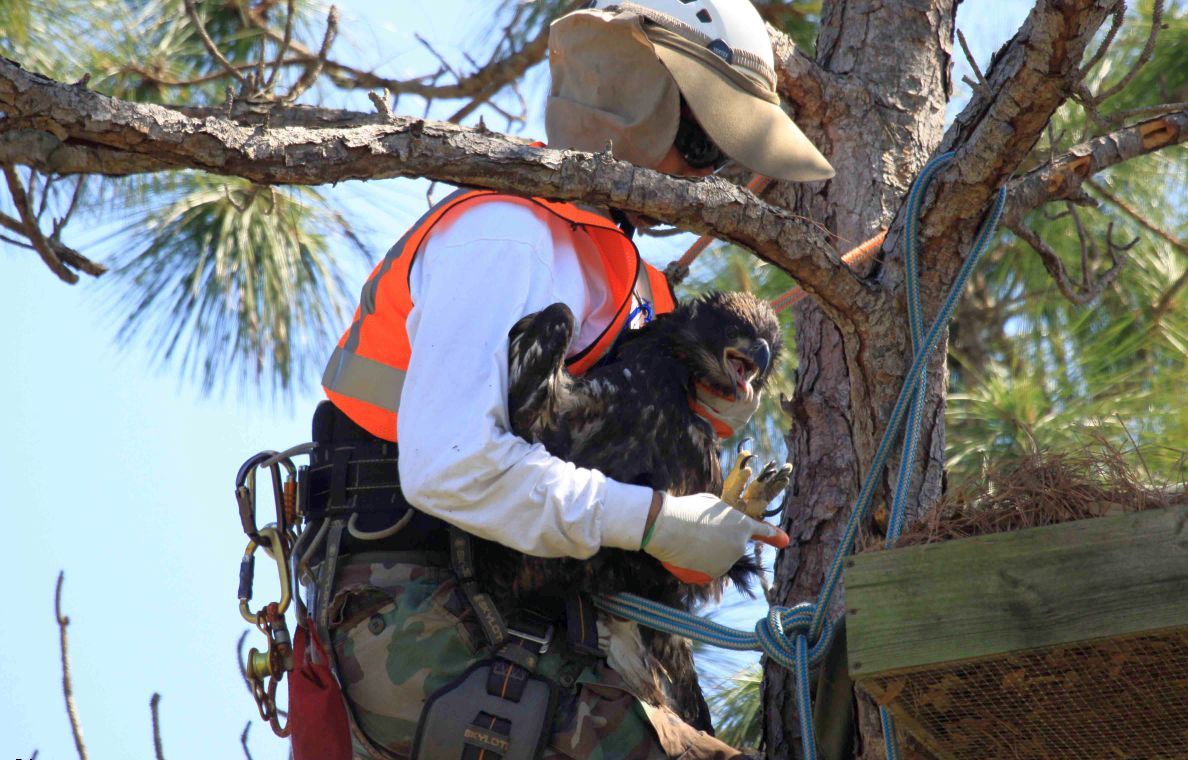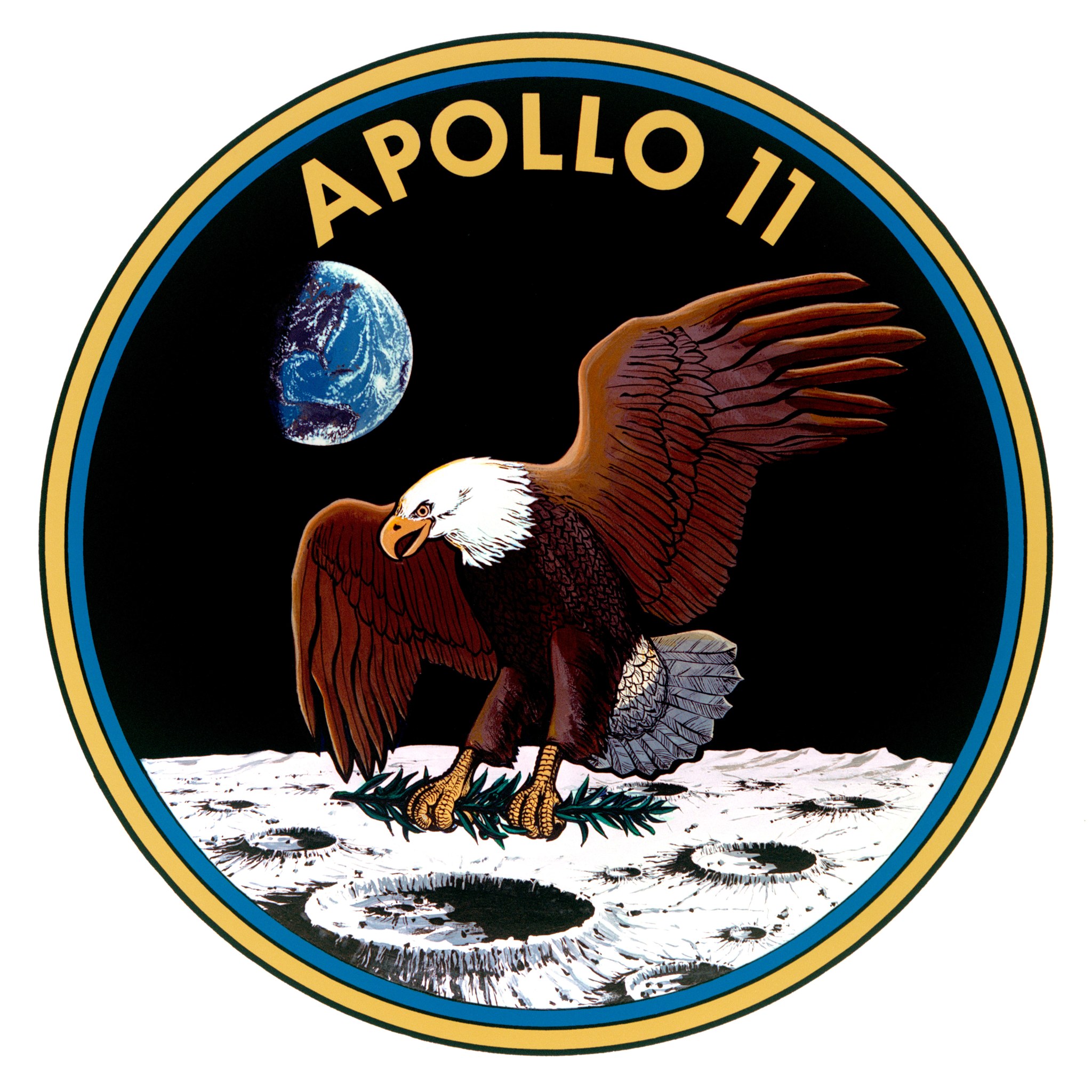When a strong thunderstorm recently blew through NASA’s Kennedy Space Center in Florida, two eagles landed – falling to the ground along with their nest. Fortunately, ecologists at the spaceport, who take great care to track the birds and protect their habitat, stepped in and rescued the eaglets.
Kennedy is a nesting area for numerous bald eagles. Space center employees and visitors alike enjoy watching their majestic flights overhead. Besides being the national bird of the United States, bald eagles have been a popular image on a dozen mission patches for American human spaceflights.
“We do a survey of the eagle nesting areas about three times a year,” said Becky Bolt, a wildlife ecologist with InoMedic Health Applications Inc. “A couple of days after the big storm, we found three eagle nests had been blown to the ground. One had an eaglet standing in the nest. We then spotted another lying on the ground, about 100 yards away.”
InoMedic Health Applications (IHA) is NASA’s Medical and Environmental Support contractor at Kennedy.
During the March 26 survey three previously active eagle nests were found on the ground. All three had been in dead, leafless pine trees, called “snags.” The two eaglets were found south of Kennedy’s Vehicle Assembly Building (VAB) and north of Schwartz Road, east of Kennedy Parkway.
The thunderstorm that passed through the Space Coast on the afternoon of March 24 lasted less than 30 minutes, but it pounded the area with heavy rain, hail and winds exceeding 60 miles per hour.
“It was easy to see how that would blow the nest to the ground,” said Lynne Phillips, a physical scientist in the Environmental Management Branch of Center Operations.
Phillips pointed out that the eaglets are believed to be about six to seven weeks old and were not yet mature enough to fly.
“A bird that can’t fly is helpless,” she said. “While there are predators, such as bobcats, that could have threatened the eaglets, their main problem was dehydration. Fortunately, neither eaglet had any broken bones.”
With the assistance of others from IHA and the Merritt Island National Wildlife Refuge, both birds were collected and taken to the Audubon Center for Birds of Prey in Maitland, Fla. The center provides medical treatment, rehabilitation and release of Florida’s raptors.
Two days after the rescue, one eaglet was returned to the area where he was found. A nest box was built with a wood frame, wire mesh in the bottom and filled with twigs and straw.
“We placed him in a pine tree near where the original nest was located,” Bolt said.
The second eaglet remains at the Audubon Center where treatment continues for an eye problem.
“The Audubon Center’s vet doesn’t think the eye was injured in the fall, and the problem may be due to an illness or disease,” Bolt said, “We want him to be able to fly before being released. We hope that we will be able to release him in the next few weeks.”
Wildlife experts note that the ability to fly is a key to survival for eagles or other birds living in the wild.
“Before they can fly, a bird can’t escape predators, or find food and water,” Bolt said. “Once fledgling eagles learn to fly, their parents will lead them to the river and show them how to catch fish. They learn by watching what other eagles do.”
Ecologists at Kennedy have plenty of opportunities to track the activities of local bald eagles. The space center covers 140,000 acres and is part of the Merritt Island National Wildlife Refuge. The refuge includes fresh-water impoundments, salt-water estuaries and brackish marshes. The diverse landscape provides habitat for more than 310 species of birds, 25 mammals, 117 fishes and 65 amphibians and reptiles including species such as wood storks, Florida scrub jays, Atlantic loggerhead and leatherback turtles, ospreys and alligators.
Eagles usually nest in the area from September to late April or early May.
“We average about 14 to 15 eagle nests each year,” Bolt said. “The same pair of eagles usually returns to the same nest. The one along Kennedy Parkway, south of the VAB has been there as long as anyone can remember.”





























